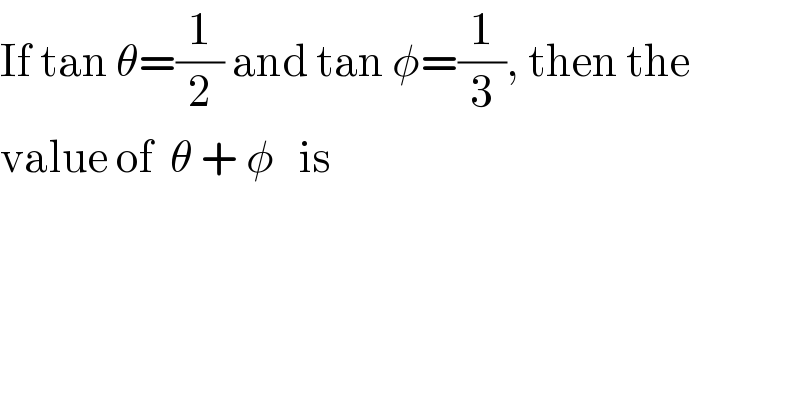
Question and Answers Forum
Question Number 62388 by hovea cw last updated on 20/Jun/19

Commented by Tony Lin last updated on 20/Jun/19

Answered by ajfour last updated on 20/Jun/19

| ||
Question and Answers Forum | ||
Question Number 62388 by hovea cw last updated on 20/Jun/19 | ||
 | ||
Commented by Tony Lin last updated on 20/Jun/19 | ||
 | ||
Answered by ajfour last updated on 20/Jun/19 | ||
 | ||
| ||